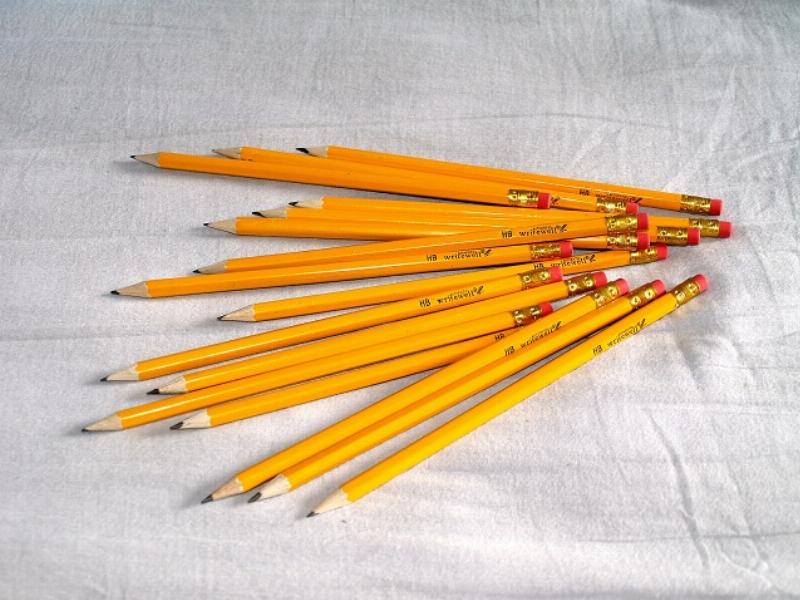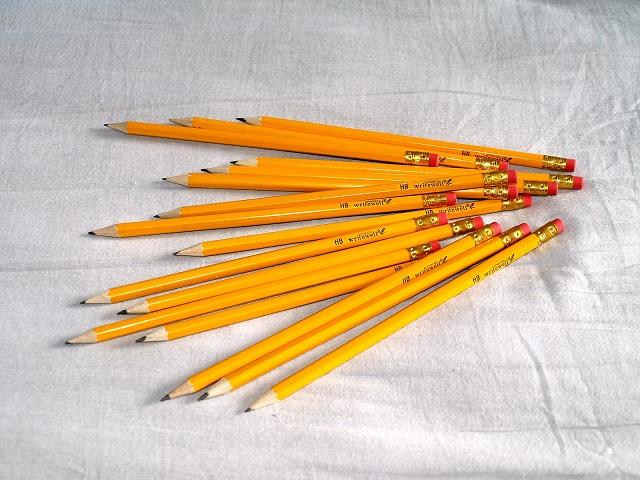


Congresswoman Judy Chu (D-Los Angeles), a 17-year veteran of Capitol Hill, recently posted a graphic on X blaming “Trump’s tariffs” for the rising cost of back-to-school supplies. A glance at her list reveals a more telling story: most of the items are pencils, pens, paper, and lunchboxes. Essentials. Yet, much of what American children need to write, organize, and eat comes from overseas.
Yes, pencils. Once staples of every classroom, most American pencils are now imported from China, Brazil, and Mexico. Domestic pencil production has largely disappeared. Take Dixon Pencils. Until the 1980s they used to make pencils in Jersey City, New Jersey. Then, thanks to corporate mergers, an Italian company took over and now those pencils come from… China, Brazil, and Mexico.
Paper, similarly, is often imported -- even though the U.S. has vast forests and robust recycling programs. Lunchboxes? The metal or insulated versions today mostly come from China or Bangladesh.
This isn’t a novelty issue; it’s a policy and industrial failure. Decades of offshoring and “advanced economy” thinking have hollowed out industries that once provided stable middle-class jobs. Pencils, paper, lunchboxes -- these are not luxuries. They are necessities for 48-49 million K–12 students this school year. And yet, the market for these goods is filled entirely by foreign producers.
Chu’s post highlights a broader problem: politicians often view issues through a partisan lens, blaming tariffs or the latest policy tweak instead of confronting the underlying realities. The real question is not tariffs -- it’s why the U.S. cannot produce basic school supplies domestically. The answer lies in decades of industrial policy choices that favor digital over tangible, high-tech over practical, offshoring over American labor.
Think about it: pencils, paper, lunchboxes -- items so fundamental that they should be the first industries to be considered safe, domestic production. Yet America depends on foreign supply chains for the most basic tools of learning. Children -- and their parents -- have become collateral damage in a system that prizes globalization over economic self-sufficiency.
Once upon a time, mills and factories were the lifeblood of New England, the Midwest, and the Pacific Northwest. They provided good wages and stable careers for people who did not need a four-year degree to support their families. Today, those jobs have largely disappeared, replaced by offshored production and the illusion that “advanced” America only ‘writes” with keyboards and touchscreens. Pencils and paper are “primitive” and “Third World products,” the argument goes, too basic for an economy that sells itself as high-tech.
Except we’re now dependent on that Third World.
For millions of students, keyboards alone will not suffice. They still need to write, take notes, organize, and carry their lunches. They need the basics -- items that, once, American manufacturers produced efficiently and economically. The fact that we cannot make these items domestically is not just inconvenient; it is a failure of policy, foresight, and national priority.
This is also a matter of jobs and economic opportunity. Manufacturing pencils, paper, or lunchboxes does not require Ph.D.-level expertise, but it does create work that pays a living wage. These were the kinds of positions that helped build the American middle class, allowing families to thrive without depending on government programs. By allowing these industries to disappear, policymakers have hollowed out the ladder to economic stability for ordinary Americans.
The broader lesson is clear: if America cannot make pencils, paper, or lunchboxes, what does that say about our industrial strategy and economic resilience? Dependence on foreign supply chains for the most mundane goods leaves the country vulnerable -- economically, socially, and culturally. We may call ourselves “advanced,” but we have ceded the basics of everyday life to other nations.
Lawmakers, educators, and families deserve more than partisan finger-pointing. They deserve a strategy that ensures America can produce the essentials domestically, sustain jobs, and protect economic independence. Until that happens, we will continue to watch as even the simplest school supplies travel halfway around the world before landing in our children’s backpacks -- a symbol of a country that has prioritized ideology over practicality and convenience over independence.
The American middle class is still here. It still needs work. Our students still need pencils, paper, and lunchboxes. America should be able to make them. If we can’t, it’s time to ask why.

Image: Santeri Viinamäki
